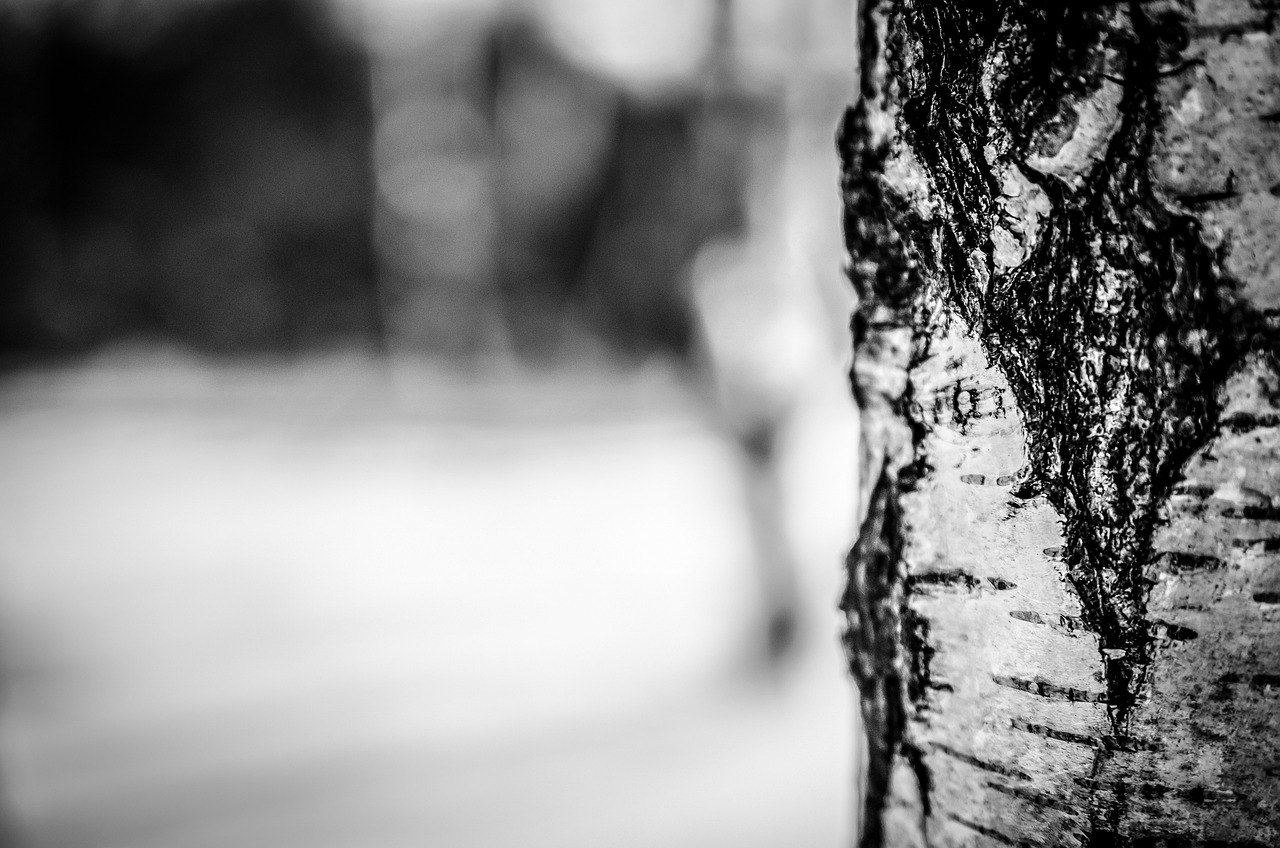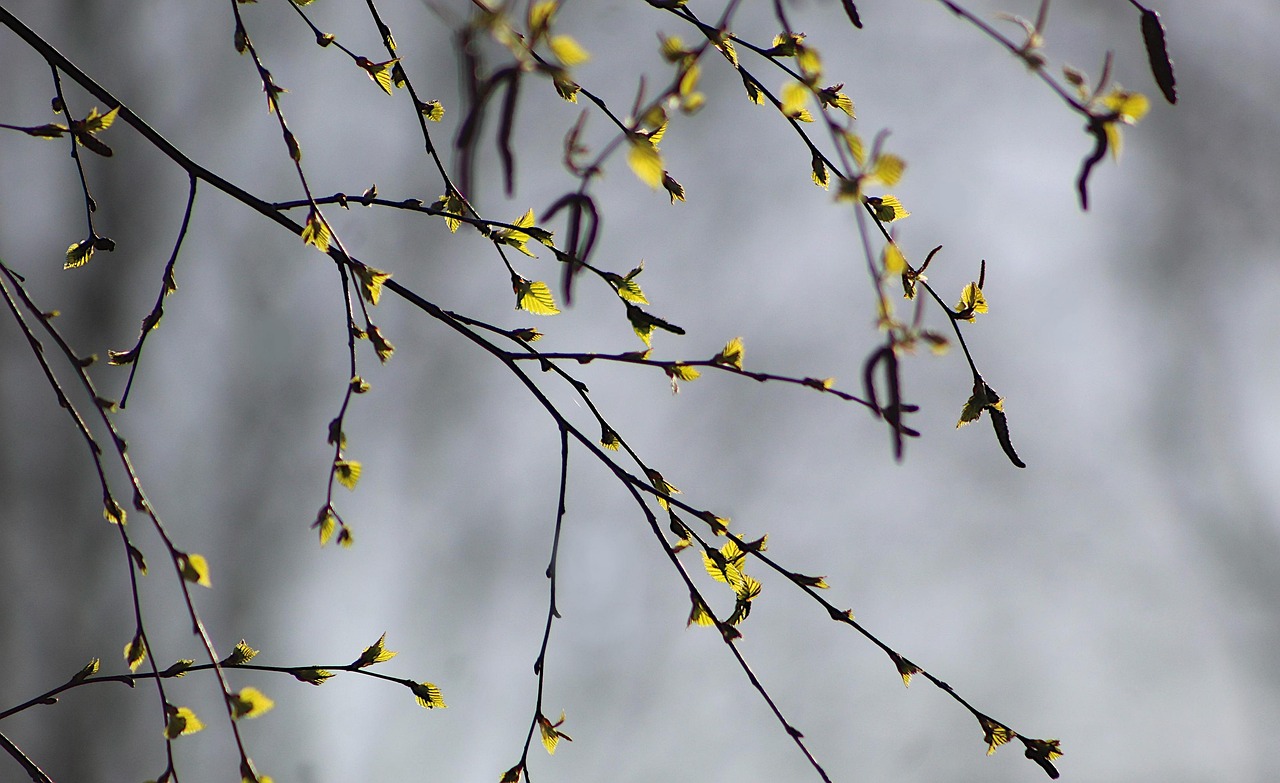To save a dying birch tree, it is essential to identify the specific diseases affecting it. Common issues include birch borer infestations, fungal infections, and environmental stress. Solutions may involve pruning infected areas, applying appropriate treatments, and improving soil conditions to restore the tree’s health.
Understanding Birch Trees and Their Vulnerabilities

Birch trees are beloved for their striking appearance and rapid growth. They are commonly found in North America, Europe, and Asia, known for their distinctive white bark and delicate leaves. However, these trees are susceptible to various diseases and pests that can lead to their decline. Understanding these vulnerabilities is crucial for effective management.
Birches thrive in well-drained soils and prefer areas with plenty of sunlight. Unfortunately, they also have a relatively short lifespan, typically ranging from 30 to 40 years. This makes them particularly vulnerable to diseases that can arise from environmental stressors or biological threats. Some common factors that contribute to the decline of birch trees include:
- Pests, such as the bronze birch borer
- Fungal infections like birch leaf spot
- Environmental stress due to drought or poor soil conditions
- Improper pruning techniques
Common Diseases Affecting Birch Trees
Identifying the specific disease affecting a birch tree is vital for successful treatment. Here are some of the most prevalent diseases:
| Disease | Symptoms | Solutions |
|---|---|---|
| Birch Leaf Spot | Yellow or brown spots on leaves; early leaf drop. | Prune affected leaves; apply fungicides. |
| Bronze Birch Borer | D-shaped exit holes in bark; wilting leaves. | Insecticidal treatments; maintain tree vigor through proper care. |
| Root Rot | Yellowing leaves; stunted growth. | Improve drainage; remove affected roots. |
Each of these diseases requires different approaches for successful management. Regular monitoring of birch trees is essential to catch any signs of distress early. This allows for timely intervention before significant damage occurs.
Environmental Factors Impacting Birch Health
In addition to disease, environmental factors play a crucial role in the health of birch trees. Some of the most impactful factors include:
- Soil Quality: Poorly drained or compacted soil can hinder root development.
- Drought Conditions: Insufficient water can cause stress that leads to disease susceptibility.
- Competition: Nearby plants can compete for resources, weakening birch trees.
Addressing these environmental issues is key to enhancing the vitality of birch trees. Providing adequate water during dry spells and ensuring the soil remains healthy and nutrient-rich can help prevent many problems from arising.
By understanding the common diseases and environmental factors affecting birch trees, tree owners can take proactive measures to save their trees. This knowledge is essential for maintaining the beauty and health of these cherished trees in gardens and landscapes.
Identifying Signs of Distress in Birch Trees
Recognizing the signs that indicate a birch tree is in distress is essential for timely intervention. Early detection can often mean the difference between recovery and loss. The following signs are commonly associated with birch tree problems:
- Discoloration of Leaves: Yellowing or browning leaves can signal nutrient deficiencies or disease.
- Wilting or Drooping: Leaves that appear limp may indicate insufficient water or root issues.
- Premature Leaf Drop: If a tree sheds its leaves earlier than usual, it may be under stress.
- Bark Damage: Cracks, peeling, or holes in the bark could suggest insect infestations or fungal infections.
- Abnormal Growth Patterns: Stunted or irregular growth can indicate health problems.
Being aware of these symptoms allows homeowners and gardeners to respond quickly and effectively. Regular inspections of birch trees can help in catching these signs early.
Pest Management Strategies
Many pests can afflict birch trees, leading to health problems. Effective pest management is crucial for maintaining the health of these trees. Some common pests include:
- Bronze Birch Borer: This insect is one of the most notorious pests affecting birch trees. It burrows into the bark, causing significant damage.
- Birch Leafminer: The larvae of this pest feed on leaf tissue, leading to unsightly damage and reduced photosynthesis.
- Aphids: These small insects suck sap from the leaves, resulting in curling and stress.
Implementing integrated pest management (IPM) strategies can help control these pests effectively. Here are some methods to consider:
- Regular Monitoring: Check for signs of pests regularly to catch infestations early.
- Biological Controls: Introduce natural predators, such as ladybugs, to help control pest populations.
- Pesticide Applications: Use targeted insecticides when necessary, following label instructions carefully.
- Cultural Practices: Maintain tree health through proper watering and fertilization, making them less susceptible to pests.
Treatment Options for Common Diseases
Once a disease has been identified, appropriate treatment options should be considered. Here are some effective treatments for common birch tree diseases:
Birch Leaf Spot
This fungal disease causes noticeable spots on leaves. Treatment options include:
- Fungicide Application: Apply a fungicide labeled for leaf spot diseases during early spring.
- Pruning Affected Areas: Remove and dispose of infected leaves to reduce the spread.
Bronze Birch Borer
To combat this destructive pest, consider the following strategies:
- Pesticide Treatments: Use systemic insecticides that are absorbed by the tree and target borers.
- Cultural Practices: Ensure trees are healthy through proper care, making them less attractive to borers.
Root Rot
This disease can be detrimental if not addressed promptly. Options for treatment include:

- Improve Drainage: If root rot is suspected, improve soil drainage around the tree.
- Remove Affected Roots: Pruning away diseased roots can help restore health.
Treating birch trees effectively requires knowledge of both pests and diseases. Implementing the right strategies can ensure that these trees remain healthy and vibrant in your landscape.
Preventative Measures for Birch Tree Health
Maintaining the health of birch trees involves proactive measures that can prevent diseases and pest infestations. By creating an environment conducive to growth and resilience, tree owners can significantly reduce the risk of problems. Here are some important preventative strategies:
Proper Planting Techniques
When planting birch trees, certain techniques can enhance their chances of thriving. Consider the following:
- Selecting the Right Location: Choose a site with well-drained soil and plenty of sunlight. Avoid areas prone to waterlogging.
- Spacing: Ensure adequate spacing between trees to promote air circulation, which helps prevent fungal diseases.
- Soil Preparation: Test the soil pH and amend it if necessary to ensure it falls within the ideal range for birches (around 6.0 to 7.0).
Watering Practices
Watering is vital for birch trees, especially during dry spells. Here are some best practices:
- Consistent Moisture: Birch trees prefer consistently moist soil. Water deeply and regularly to encourage deep root growth.
- Avoid Overwatering: Ensure that the soil drains well to prevent root rot. Monitor rainfall and adjust watering accordingly.
- Mulching: Apply a layer of organic mulch around the base of the tree. This helps retain moisture and suppress weeds.
Nutrient Management for Birch Trees

Healthy birch trees require appropriate nutrients to flourish. Regular soil testing can help determine nutrient deficiencies. Here are some tips for managing nutrients:
Fertilization Guidelines
Fertilizing birch trees can support their growth and overall health. Consider the following guidelines:
- Slow-Release Fertilizers: Use slow-release fertilizers in early spring to provide a steady supply of nutrients throughout the growing season.
- Organic Options: Incorporate organic matter, such as compost, into the soil to improve fertility naturally.
- Avoid Excess Nitrogen: While nitrogen is important, excessive amounts can lead to weak wood and increased susceptibility to pests.
Signs of Nutrient Deficiencies
Being aware of nutrient deficiencies can help in taking corrective actions promptly. Common signs include:
- Yellowing Leaves: Often indicates nitrogen deficiency.
- Purple Leaves: May suggest phosphorus deficiency.
- Pale or Stunted Growth: Can indicate a lack of essential minerals like potassium or iron.
Seasonal Care and Maintenance
Caring for birch trees throughout the seasons is essential for their health. Each season presents unique challenges and opportunities for maintenance:
Spring Care
As birch trees emerge from dormancy, spring is a crucial time for care. Activities to consider include:
- Pruning: Remove dead or damaged branches to promote healthy growth.
- Pest Monitoring: Keep an eye out for early signs of pests, especially as new leaves emerge.
Summer Care
During summer months, focus on maintaining moisture and monitoring tree health:
- Irrigation: Ensure consistent watering during hot periods to prevent stress.
- Pest Control: Continue monitoring for pests and apply treatments as necessary.
Fall Care
As leaves begin to fall, take steps to prepare birch trees for winter:
- Leaf Cleanup: Rake fallen leaves regularly to reduce the risk of leaf spot diseases.
- Winterization: Apply mulch around the base to protect roots from freezing temperatures.
Winter Care
Even in winter, care is important for birch trees. Consider these tips:
- Avoid Damage: Protect young trees from heavy snowfall and ice that can break branches.
- Meditation: Check for signs of damage or disease during warmer winter days.
Implementing these preventative measures ensures that birch trees remain vigorous and healthy throughout their lifespan. By staying vigilant and proactive, tree owners can enjoy the beauty and benefits that these magnificent trees provide.
Additional Considerations for Birch Tree Care

Beyond the regular seasonal care and maintenance, there are other important considerations to keep in mind when caring for birch trees. These factors can influence the long-term health and stability of your birch trees.
Choosing the Right Birch Species
Different species of birch trees have varying resistance to diseases and pests. When selecting a birch tree for planting, consider the following:
- Native Species: Opt for native birch species, such as the River Birch or Paper Birch, which can better adapt to local conditions and are often more resilient to local pests.
- Disease Resistance: Research species known for their resistance to specific diseases, like the ‘Heritage’ River Birch, which is less susceptible to bronze birch borer.
Community and Expert Resources
Engaging with local gardening communities or experts can provide valuable insights into birch tree care. Resources to consider include:
- Local Extension Services: Many universities offer extension services that provide valuable information on tree care specific to your region.
- Online Forums: Participate in gardening forums where you can ask questions and share experiences with fellow tree enthusiasts.
- Consulting Arborists: Hiring a certified arborist can provide expert guidance tailored to your birch tree’s specific needs.
Final Thoughts
Caring for birch trees involves understanding their unique needs and vulnerabilities. By identifying diseases early, implementing effective treatment strategies, and maintaining a proactive approach to care, you can significantly enhance the likelihood of your birch trees thriving. Remember that regular monitoring and attention to environmental factors play a key role in their health.
The beauty and benefits of birch trees are well worth the effort. With proper care, these trees can flourish, providing shade, beauty, and habitat for wildlife. Whether you are a seasoned gardener or a new tree owner, the knowledge gained from this article equips you with the tools needed to ensure your birch trees remain healthy and vibrant throughout their lifespan.
In conclusion, saving a dying birch tree is a multifaceted process that requires diligence and informed action. By following the guidelines outlined in this article—ranging from identifying symptoms of distress to implementing effective treatment options—you can foster a thriving environment for your birch trees. Ultimately, investing in their care contributes to the overall health of your landscape and enhances the natural beauty of your surroundings.
